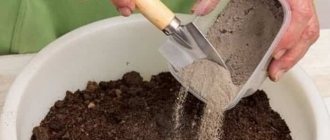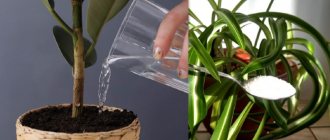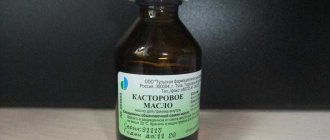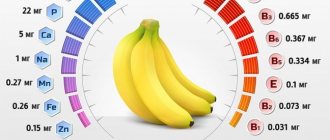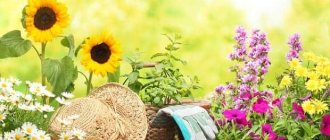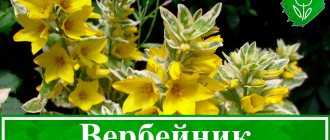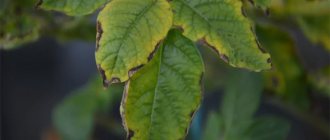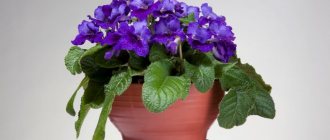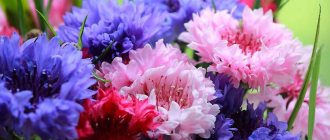Mulch - fertilizer for garden flowers
A very good option is to mulch the soil. Many gardeners use organic materials for this purpose: rotted compost, decomposed peat, rotted leaves, and mown grass.
Mulch applied under flowers decomposes over time and enriches the soil with additional nutrients. At the same time, it can become an obstacle to the germination of weeds. They cannot break through it and die.
Mulching can be done twice per season: in spring and autumn. In the first case, it will additionally serve as protection against temperature fluctuations and retain moisture in the soil. Gradually decomposing in warm weather, the mulch contributes to a looser state of the soil surface. This means that flower roots can develop freely in it. In September, spring mulch is replaced by composting.
Mulching material added in the fall helps plants tolerate frosty, windy weather more easily. It protects the ground from deep freezing, which makes it easier for flowering plants to winter. In the spring it is simply embedded in the soil.
Important! If mowed grass is used as mulch, it must be watered with a solution of nitrogen fertilizers and loosened more often.
What are the types of fertilizers?
Grouping is carried out for various reasons.
Type of substance.
- Mineral;
- Organic;
- Universal (organomineral).
The Top Rating is based on this classification.
Release form.
- Powder;
- Granules;
- Liquids.
Florists often choose liquids. They are ready, easy to use, and can be watered and sprayed. But the price is more expensive than dry ones. In addition, experts recognize granular forms as the best, as they provide a slow, gradual supply of nutrients.
A review of products shows that manufacturers are experimenting and rare configurations are gradually appearing, for example, new products in the form of gels or lozenges.
Seasonality.
- For a certain season;
- All year round.
Action.
- Pest protection;
- Weed protection;
- Soil restoration;
- Strengthening immunity;
- Growth stimulation;
- Nutrition.
How to use mulch?
Many modern gardeners use the bark of various trees as mulching material. It takes a long time to decompose, up to 2-3 years. Typically, for perennial flowers, a layer of 3-5 cm is poured.
If there is a spruce forest near the site, you can collect coniferous litter. Rhododendrons love it very much. For them, adding a layer of 5-7 cm is enough. But you should know that needles increase the acidity of the soil. Therefore, they are not suitable for all garden plants.
The most popular are manure humus and compost. A layer of 5 cm is poured under perennial flowers. The main thing you should pay attention to is that there are no remains of weeds in them.
On a note! Roses and lilies love mulching with nut shells. If they grow in your garden, then when you crack nuts, do not forget to collect it for your pets. You can use anything from pine nuts, walnuts, peanuts, hazel.
To fertilize or not to fertilize
I will definitely tell you how to apply fertilizers as my seedlings grow, but you must understand that the amount of fertilizing and dosage depend on the type of soil, acidity, fertility of your soil, as well as on what fertilizers and in what quantities you added to the soil. soil earlier.
Some of the previously applied fertilizers were absorbed by your plants, some evaporated or were washed away by watering and rain, but some of them probably remained in the soil, so you need to monitor the development of plants, their condition and apply fertilizers only as needed, taking into account that in each climate at the same time different temperatures and different solar activity.
I wish you to take your time to sort everything out and purchase in advance the fertilizers you will need next season.
All the best to you.
Mineral fertilizers for flowers in the country
How to feed flowers for lush flowering? Mineral fertilizers are the fastest and easiest method of feeding garden flowers. Only with their help can flowers develop in poor soils. They especially need mineral fertilizers on sandy and clay soils. Mineral fertilizers are nitrogen, potassium, phosphorus and complex.
Nitrogen fertilizers
Nitrogen fertilizers are applied in the spring, regardless of organic fertilizers, and then during the growing season as additional fertilizing. Nitrogen is very important for rapid plant growth. With its deficiency, the leaves become pale and small, and their density suffers.
Consequences of nitrogen deficiency for plants
In addition to the visually visible consequences of nitrogen deficiency, there are invisible changes occurring in the soil.
Most often this can be observed in early spring, when the earth has not yet had time to warm up. Low temperature interferes with the mineralization process, which is why the resulting nitrogen deficiency occurs at an early stage of plant development.
This leads to improper plant growth. Each species may have its own special changes:
- in apple trees the number of fruit ovaries noticeably decreases, the leaves become smaller, not reaching the required size;
- strawberries do not produce normal shoots, the leaves turn yellow ahead of schedule;
- the lower leaves of potatoes and tomatoes turn yellow and fall off before they have time to grow;
- unripe tomato fruits fall off even with a slight wind;
- in pome-bearing plants, the leaves become noticeably narrower;
- the growth of new shoots in roses slows down;
- in fruit trees, the chlorophyll content decreases, which leads to a change in the color of the leaves; small fruits have a bright color and easily fall off;
- cabbage may experience chlorosis, which is accompanied by yellowing of the leaves around the veins;
- Beet leaves turn yellow, become limp and fall off.
Fertilizers with phosphorus
Phosphorus is necessary for the development of the root system and the ripening of plant tissues. Thanks to him, they become more resistant to adverse weather conditions. Phosphorus is applied as a fertilizer for flowering perennials.
Phosphorus fertilizers are either water-soluble or sparingly soluble. The latter include phosphorus and bone meal, which are rarely used.
When is it necessary to fertilize indoor plants?
Plants require fertilizing throughout the growing season. At this time, their aboveground and underground segments are actively growing. In order for the home flora to develop evenly, it needs help. The growing season varies, and therefore it is important to take into account the characteristics of the plants. By default, the need for fertilizer occurs in spring and summer. But there are specimens that continue to bloom in autumn and winter. There is no universal rule for applying fertilizing.
It is important to remember that increasing daylight hours signals the plants’ need for nutrients. If your region is in the south, then you can feed the flora from the end of February. In cold areas, plants “wake up” closer to mid-March. The end of the growing season occurs when daylight hours decrease. In autumn, plants go into hibernation, so excess fertilizer is harmful to them.
To understand the rules of feeding, you need to remember three facts:
- When the plant goes into dormancy, it does not need to be fertilized. This period is accompanied by a complete stop of growth and occurs in the winter-autumn season. Plants that go dormant during these months include beautifully flowering specimens. In autumn they shed their leaves and expose the above-ground part of the plant.
- If the plant begins to prepare for the dormant period, feeding should be stopped gradually. With decreasing sun hours, the flora slows down its development and does not require nutrients in the same volume. During this phase, it is important not to overfeed the plant, otherwise you risk losing it.
- Not all plants go into deep dormancy. There are specimens that continue to stay awake all winter. Such representatives of the flora require rare and moderate feeding. If you don't take care of them all winter, you may not wait for them to wake up in the spring.
Important. Feeding indoor plants from October to February is possible only if the room is well lit. Violation of this rule leads to burns of the root system and accumulation of unabsorbed substances.
Superphosphate
Simple superphosphate comes in powder and granular forms. Both dissolve well in water, but leave sediment at the bottom. Granulated superphosphate contains up to 22% phosphorus and is better absorbed by flower roots. It is applied during spring and autumn tillage, when planting plants and as a top dressing. To plant perennial flowers in a hole, just add 1 tbsp. fertilizers
Important! Fertilizing with phosphorus fertilizers is combined with potassium fertilizers. This “commonwealth” promotes the best absorption of elements.
Double superphosphate contains up to 50% phosphorus. It is very convenient to store, as it does not cake, and consumption is halved. The drug dissolves well in water without sediment.
Feeding with superphosphate can be carried out either in dissolved or dry form. The latter is preferable in cold and wet weather. To apply superphosphate in liquid form, add water and leave for 2-3 days. Then drain the top and use the sediment for compost.
They are used for plants with a long growing season: clematis, lilies, roses. Annuals with a long flowering period also need phosphorus fertilizing.
What are flowering activators and what are they made of?
Stimulants, or activators of flowering and fruiting, are a group of drugs containing natural or synthetic hormones that help increase the number of buds on a plant and accelerate the entry into fruiting, as well as a complex of minerals. One could call this a special fertilizer, but the point is not only in the abundance of potassium and phosphorus in these preparations. Of course, adding these substances would be enough to stimulate flowering, but phytohormones provide something more.
The formation of future flowers is caused by hormones such as florigen, consisting of gibberellin and anthesins, and vernaline. Gibberellin primarily stimulates those plants that require long daylight hours to bloom, and vernaline stimulates biennial plants that overwinter outside at low temperatures.
Of course, nature itself made sure that phytohormones are formed in plants, for example, in seeds or in the tops of perennials. But their supply is too small, it is enough to ensure minimal flowering and fruiting, but not to implement all ambitious gardening plans.
In order for all the crops on the site to actively bloom and bear fruit abundantly, it is necessary to use flowering stimulants. These preparations are made from peat, coal or artificially. Natural (biological) preparations are considered the highest quality, since they do not accumulate in the soil and, in addition to phytohormones, contain vitamin mixtures.
In addition to their main purpose, stimulants perform several more functions:
- increase plant immunity;
- accelerate the ripening of the crop;
- improve the taste of the fruit and increase the content of vitamins in it;
- reduce the level of nitrates in fruits.
Potassium preparations
Potassium fertilizers increase the resistance of flowers to adverse weather conditions and improve the quality of seed material. This fertilizer must be applied to all flowering plants.
Potassium sulfate
This is the best potash fertilizer that does not contain chlorine. It contains up to 48% potassium. It is well retained in the top layer of soil and promotes intensive root growth. It is applied to the soil when preparing flower beds for planting flowers and as a liquid fertilizer. For 10 liters of water use 1 tbsp. powder.
Calimagnesia
On sandy and sandy loam soils it is better to use potassium magnesia, since plants on them suffer from a lack of magnesium. The fertilizer contains up to 28% potassium and 9% magnesium. Can be added dry at the rate of 1 tbsp. per 1 sq. m landings.
Natural fertilizers
Macroelements necessary for the harmonious development of plants can be obtained from natural components. For example, some weeds retain phosphorus in their tissues, which means they can be used to prepare nutritious compost. Among them are wormwood, thyme, hawthorn, feather grass and rowan berries. All of these plants contain approximately 1% phosphorus.
Potassium is found in stove ash. Most of this substance is formed when burning young deciduous plants - up to 14%. The ash also contains potassium oxide and a small amount of phosphorus.
The main nitrogen-containing natural fertilizer is manure. Moreover, horse manure is richer in this component than cow or pork manure and decomposes faster. The amount of nutrients depends on the degree of decomposition of the product. Plants best absorb nitrogen from rotted manure or humus.
Humus
Fertilizers containing nitrogen, phosphorus or potassium, their combination with each other, with other macro and microelements, have a beneficial effect on all plants. The result of fertilizing is lush foliage, abundant flowering and a rich harvest. You just need to determine the correct dosage and choose the right time to enrich the soil.
Organic soil fertilization
Complex mineral fertilizers
More often they use complex fertilizers, which already contain basic chemicals.
Nitrophoska
Universal flower food contains nitrogen, phosphorus and potassium in equal amounts (17% each). It does not cake easily and dissolves easily in water. Suitable for any type of soil. In dry form, add 1 tbsp after abundant moistening of the soil. per sq. m.
Potassium and its role
(adsbygoogle = window.adsbygoogle || []).push({});
Potassium ensures the overall development of the plant. Without it, the synthesis of complex carbohydrates and proteins does not occur, growth slows down, and the stem weakens. Deficiency of this substance also leads to weakened immunity and reduces the ability to adapt to negative environmental factors - drought, cold, and disease. This fertilizer affects the keeping quality of the harvested crop and the taste of the fruit.
Signs of potassium deficiency in flowers and vegetables:
- leaves turn completely or partially brown;
- the stem and leaves become thinner;
- the development of buds stops;
- overall growth is inhibited.
Potassium is rarely used to enrich soil in its pure form. More often it can be found as part of mineral complexes.
Organic fertilizers for flowering plants
Organic fertilizers improve soil structure. The effect of organics manifests itself gradually over a long period of time. Organic fertilizers, in addition to the main elements, often contain a large set of microelements necessary for the development of flower plants.
Humus
The most valuable organic fertilizer obtained as a result of the complete decomposition of manure, leaves, plant residues, and household waste. It is especially necessary on sandy and sandy loam soils.
To prepare manure humus, it is placed on material that does not allow moisture to pass through, the top is also covered to prevent the ingress of plant seeds, and it is left for several years. After complete decomposition, it is used the next year.
Apply as a mulching material or embed into the soil by loosening. For 1 sq. m add up to 1 bucket of humus.
For liquid feeding, it is dissolved in water in a ratio of 1:5. Leave for 3-5 days and water at the root.
Bird droppings
Chicken manure is effective for feeding garden flowers. It contains a large amount of concentrated substances, so it is used only in liquid form. Before use, it is dissolved in water at a rate of 1:10. Keep for 3 days. Before use, further dilute 1:1. Fertilizing with chicken droppings is done on moist soil, trying not to get on the plant itself. Afterwards the soil is watered again.
In autumn, dry droppings can be scattered over the surface of the flower bed at the rate of 1 bucket per 2 square meters. m flower garden.
Wood ash
Wood ash is easily absorbed by all flower plants. It contains a large set of microelements. Depending on the material from which the ash is obtained, its potassium content varies. The younger the burned plants, the more potassium. But the phosphorus contained in the ash is absorbed by plants much better than from superphosphate.
When planting perennial plants, it is enough to add 1-2 cups of ash into the hole. To feed in liquid form, ash is dissolved at the rate of 2-3 cups per 10 liters of water. Mix thoroughly and incubate for 3–5 days.
Dolomite flour
It contains 28% potassium and up to 20% magnesium. Used to alkalize soil. Apply regularly, every 2–4 years. The drug has a beneficial effect on plant development.
Thanks to him:
- the soil becomes healthier;
- the number of worms and beneficial microorganisms increases in it, and beetles, mites and flies die;
- Due to the formation of many young roots, the green mass increases, shoots and leaves grow faster.
Dolomite flour is added in dry form at the rate of 1 cup of powder per 1 square meter. m area. Then they are sealed using shallow loosening. Can be scattered on the snow to be absorbed into the soil with melt water.
Adviсe
When fertilizing flowers, pay attention to the characteristics of each plant - type, stage of development, appearance, by which one can judge the lack of minerals. In order not to harm the plants when feeding, follow these tips:
- during the resting stage, no drugs are added;
- after the snow melts, nitrogen fertilizers are scattered over the moist soil;
- before planting in the spring and at the end of the season, the soil is enriched with dry preparations during loosening;
- increased dosages of fertilizers are used to prepare the soil;
- Root and foliar preparations are used at different times.
Transplanted or new flowers are not fed - they need time to adapt. Also, do not fertilize plants that suffer from infectious diseases. For young flowers, the funds added during planting are sufficient. In mid-summer they can be sprayed with a solution containing microelements. They are quickly absorbed through the plates and nourish the flower until the end of the growing season.
Full feeding is more effective after rain.
Depending on the type of flowers, choose the appropriate product. For example, for roses, 3-4 single applications of organic matter per year are suitable. Astram, on the contrary, manure is not recommended, as it leads to frequent diseases. Marigolds and nasturtiums have to sacrifice flowering after organic preparations. Dahlias need a special approach - they are fed leaf by leaf due to insufficient root development.
What time and how many times should I feed flowers in the garden?
At each stage of development, garden flowers require different types of fertilizers. This is due to the fact that perennials develop wildly in the spring, then bloom, and retire in the fall. Spring small-bulbed flowers and tulips, on the contrary, are only planted in the fall so that they bloom in early spring. Therefore, it is very important to know the stage of flower development in order to help them develop correctly in time.
Important! It is necessary to follow the recommended dosage of fertilizer mixtures. Usually the package indicates the proportion of mineral fertilizers used for each type of plant.
The fertilizer application scheme for perennial garden flowers looks like this:
- spring fertilizing with nitrogen fertilizers for growth (15–20 g/sq. m);
- during the formation of buds - water the roots with organic fertilizers (1:10) with the addition of 10 g of ammonium nitrate and 15 g of potassium sulfate per bucket of solution;
- in July, liquid fertilizing with ammonium nitrate, potassium sulfate and superphosphate (15 g: 15 g: 20 g per 10 liters of water);
- August - superphosphate and potassium for better ripening of shoots and seeds (15 g per 10 liters of water).
How to fertilize annual flowers? A combination of organic and mineral fertilizers.
- April - infusion of mullein or bird droppings (1:10);
- May - nitrophoska or Kemira (15 g per 10 liters of water);
- June - mullein infusion or complete mineral fertilizer (7-10 g per 10 liters of water).
Spring bulbous
- April - 15–20 g of ammonium nitrate per 1 sq. m;
- May—15–20 g of Kemira or nitrophoska per 10 liters of water.
Useful tips on how to feed petunia seedlings
- Fertilizers come in liquid, granular, and stick form that are dipped into the soil. It is most convenient to use liquid fertilizer. Since at any time you can change the concentration and amount of fertilizer used. In addition, it is distributed more evenly in the soil.
- Petunia responds very well to leaf fertilizer, that is, to irrigating the bush. Through the leaves it absorbs nutrients much better.
- For seedlings, the fertilizer solution is made weaker than for an adult plant.
- Do not forget that for seedlings it is important not only to apply fertilizers and fertilizing, but also to correct watering and temperature conditions.
Sowing seeds for seedlings
Place drainage made of expanded clay, gravel or broken brick 1 cm thick at the bottom of the container. Then place a moist (but not too wet!) substrate so that about 2 cm remains to the top of the container.
Sow large seeds in pre-made furrows to a depth equal to three times the size of the seed, and lightly compact the soil. Sow medium-sized seeds in the furrows, but only lightly sprinkle them with soil (the layer should not exceed 0.5 cm). Mix very small seeds with dry sand, scatter them over the surface of the soil and water them with a spray bottle.
Cover the container with glass or plastic wrap and place in a warm place. Please note: until seedlings appear, the soil should always be slightly moist.
The optimal temperature for germination of seeds of heat-loving plants is 25-30°C, cold-resistant plants are 15-18°C
After germination, remove the glass or film and keep the plants at a temperature of about 20°C. When the seedlings grow up, sprinkle their stems a little with light soil and place the plants in a well-lit place with a temperature of 15°C.
Natural supplements. Recipes from grandmothers
If the need for fertilizer volumes is small, folk remedies are suitable at home.
Sugar. Pour a teaspoon of sugar into the pot and water. Recommended once a month. Glucose fills you with energy.
Yeast. They are useful for caring for plants due to phytohormones, fungi and B vitamins. To prepare a concentrate with your own hands, take 2 g of yeast and a spoonful of sugar for two liters of water. Leave for a couple of hours. Then dilute in a ratio of 1 to 5.
Leftover fruit. Bananas or citrus fruits are recommended; they nourish all flowering plants. Dry the peel, grind in a blender, mix with soil. Or put the peels in a three-liter jar, filling it a third full, pour boiling water over it, and leave for a day. Discard the pulp and add water. Use for spraying or watering.
Vegetable decoctions. The most common is a decoction of onion peels. A full set of microelements saturates plants and increases resistance to pests. How to prepare: boil 50 g of husk in a liter of water, simmer for 10 minutes over low heat. After cooling completely, strain, pour into a spray bottle, and spray the plants. Important: vegetable decoctions are prepared for one time use and cannot be stored.
There are other inexpensive methods; aquarium water, succinic acid, eggshells, water from washing cereals, tooth powder, coffee residues, tea leaves help to fertilize at home.
There are supporters and opponents of each remedy. Errors in selection will be immediately noticeable; it is important to independently monitor the response of each plant to a particular product.
